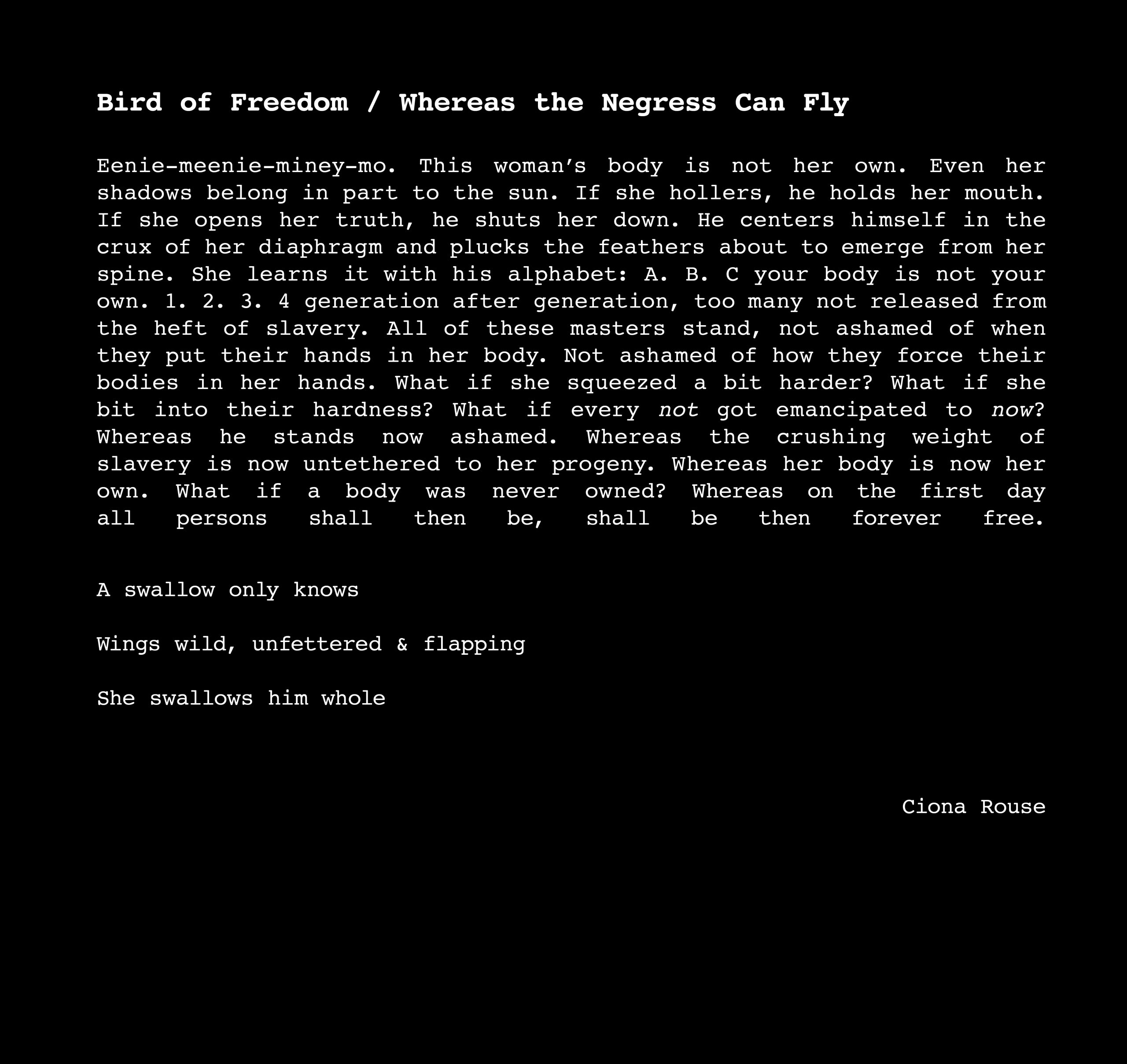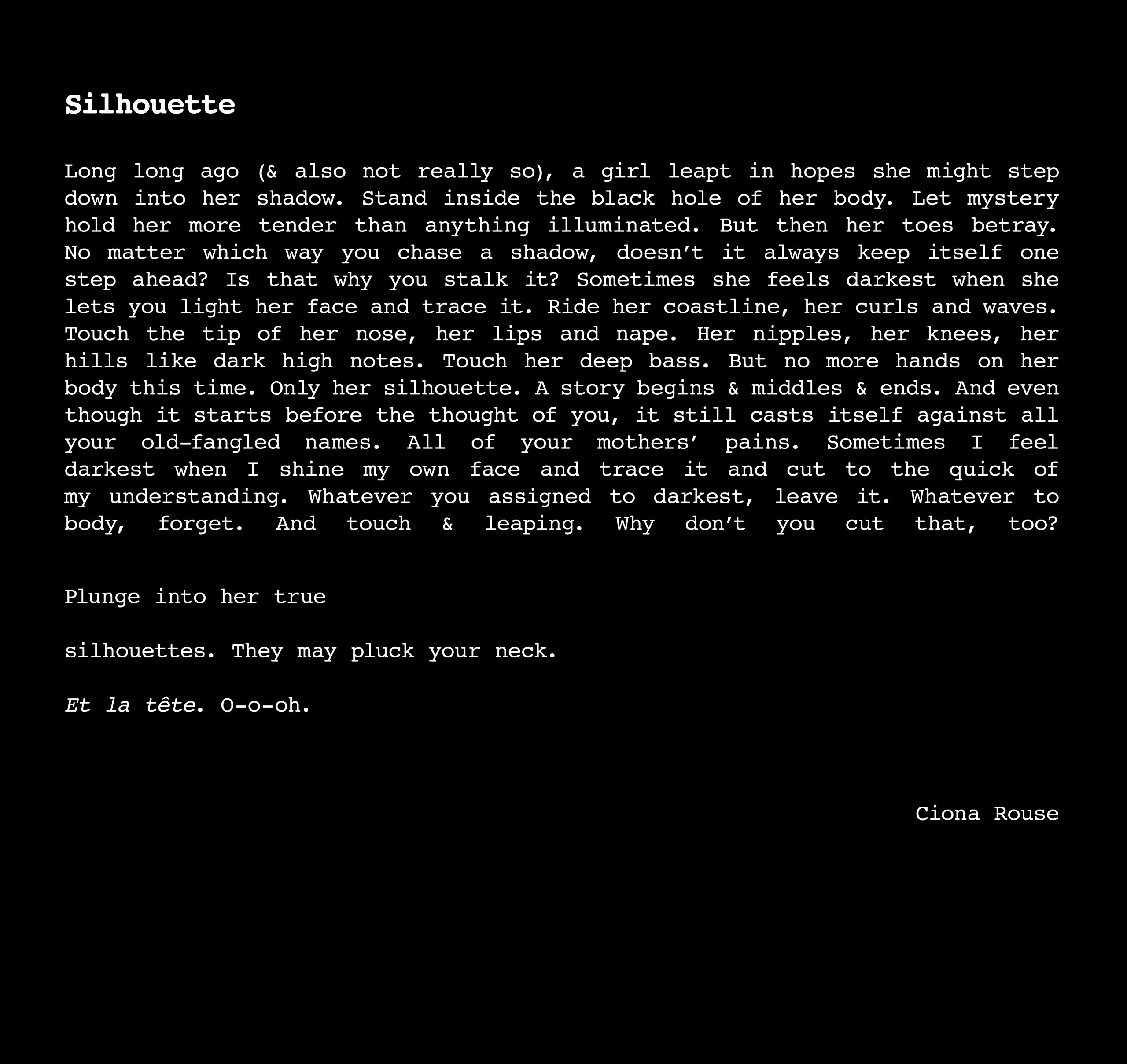
Kara Walker: Cut to the Quick, from the Collections of Jordan D. Schnitzer and His Family Foundation includes over eighty works in various mediums, created between 1994 and 2019. Walker (b. 1969, Stockton, CA) is best known for her groundbreaking large-scale silhouette tableaux. Inspired by history, literature, mythology, and fantasy, they employ racial stereotypes to address slavery, racism, exploitation, gender, and physical and sexual abuse. Her hard-hitting, unorthodox depictions of unspeakable subjects expose the raw flesh of generational wounds that have never healed.
Kara Walker: Cut to the Quick, from the Collections of Jordan D. Schnitzer and His Family Foundation was organized for the Frist Art Museum by co-curators Susan H. Edwards and Ciona Rouse. All works in this exhibition were acquired by Jordan D. Schnitzer, one of the premier collectors of prints and multiples in the United States. The foundation, established in 1997 as a nonprofit organization to manage the collections of Jordan D. Schnitzer and His family, provides supplemental funding for education and outreach in conjunction with related exhibitions and publishes scholarly texts. Since its inception, the foundation has organized more than 110 exhibitions, lending art to over 160 museums.

The Emancipation Approximation (Colophon and Scenes #1–26), 1999–2000
Screenprint
Edition 7/20
Collections of Jordan D. Schnitzer and His Family Foundation
Race and Representation
The earliest and latest works in Cut to the Quick underscore how negative stereotypes create and reinforce the discrimination and prejudice that limit access to education, employment, property rights, voting rights, social mobility, and a fair share of generational wealth and power. Walker shocked the art world in the 1990s with images of exaggerated physiognomy exhibited in a fine arts context such as the full lips, bug eyes, and wiry hair that define Topsy (1994), the character of an enslaved girl in Harriet Beecher Stowe’s Uncle Tom’s Cabin (1852). The author, intending to be empathetic, ultimately articulated a characterization of otherness based on race that endured after the Civil War, during Jim Crow, segregation, the civil rights era, and beyond. The descendants of formerly enslaved workers continued to receive little of the wealth they created with subsequent farm labor systems such as sharecropping, tenant farming, and the forced servitude practiced in some prisons today.
In the next gallery, Fons Americanus (2019) condemns the violence and complicity of governments and private enterprise in constructing the transatlantic slave trade and perpetuating its legacies. The bronze replica of Walker’s now-demolished installation in Tate London’s Turbine Hall was based on the Victoria Memorial at Buckingham Palace. Walker’s monument was an allegory of the Black Atlantic and the global waters that disastrously connect Africa to the economic prosperity of America and Europe. The flow of figures and scenes, including an Afro-Caribbean Venus, seafarers, a tree with a hangman’s noose, and the scales of justice, satirize the pride of empire and imperialism.
Topsy, ca. 1994
Photoetching
Edition AP
Collections of Jordan D. Schnitzer and His Family Foundation
Do Just So, 1996
Etching with aquatint
Edition of 35
Collections of Jordan D. Schnitzer and His Family Foundation
Canisters, 1997
Glass
Edition of 10
Collections of Jordan D. Schnitzer and His Family Foundation
Cotton, 1997
Etching with aquatint
Edition 27/35
Collections of Jordan D. Schnitzer and His Family Foundation
Li’l Patch of Woods, 1997
Etching with aquatint
Edition 27/35
Collections of Jordan D. Schnitzer and His Family Foundation
Untitled (John Brown), 1997
Etching with aquatint
Edition 27/35
Collections of Jordan D. Schnitzer and His Family Foundation
Vanishing Act, 1997
Etching with aquatint
Edition 27/35
Collections of Jordan D. Schnitzer and His Family Foundation
Sketch for a Fabulous Tale, from Skowhegan portfolio no. 1, 2011
Lithograph
Edition 10/30
Collections of Jordan D. Schnitzer and His Family Foundation
Freedom, A Fable: A Curious Interpretation of the Wit of a Negress in Troubled Times, 1997
Book
Edition of 4,000
Collections of Jordan D. Schnitzer and His Family Foundation
False Face, 2017
Bronze
Edition 1/10
Collections of Jordan D. Schnitzer and His Family Foundation
The High Note, The Low Note, The Psychotic and The Judge, 2018
Painted laser-cut stainless steel
Edition 22/30
Collections of Jordan D. Schnitzer and His Family Foundation
The Bush, Skinny, De-boning, 2002
Painted stainless steel cutouts
Edition 53/100
Collections of Jordan D. Schnitzer and His Family Foundation
Resurrection Story with Patrons, 2017
Etching with aquatint, sugar lift, spitbite, and drypoint
Edition 7/25
Collections of Jordan D. Schnitzer and His Family Foundation
Snared, 2013
Lithograph
Edition PP 3/4
Collections of Jordan D. Schnitzer and His Family Foundation
Untitled (Monkey Grinder), 2002
Screenprint
Edition 21/30
Collections of Jordan D. Schnitzer and His Family Foundation
Untitled, from Collective Impressions, 1998
Lithograph
Edition 65/70
Collections of Jordan D. Schnitzer and His Family Foundation
Chanterelle Menus: Untitled (May 21, 2006), 2006
Screenprint
Collections of Jordan D. Schnitzer and His Family Foundation
Porgy and Bess
The 1935 opera Porgy and Bess is set in 1920s Charleston, South Carolina, to music by George Gershwin with a libretto by DuBose Heyward and Ira Gershwin. Porgy, a disabled beggar, tries to free the beautiful Bess from her manipulative lover, Crown, and the drug dealer Sportin’ Life. The tragedy was criticized almost from the beginning for its characterization of the lifestyle of poor African Americans, as well as its use of their dialect, as imagined by white authors. While observing rehearsals for a 2011 performance, Walker made sketches “to understand the music and to allow myself to get caught up in the fantasy of theater.”
Later, Walker created sixteen original lithographs to illustrate a 2013 publication of the libretto by Arion Press. She also produced four companion lithographs not included in the book. Lithography is well suited to the expressiveness of Walker’s smudges, rubbings, and loose, broad strokes. The artist says of the characters, “They’ve become archetypes of another no less grand drama, that of: ‘American Negroes’ drawn up by white authors, and retooled by individual actors, amid charges of racism, and counter charges of high art on stage and screen, in the face of social and political upheaval, over generations.”
Porgy & Bess, 2013
Book with sixteen lithographs
Edition 6/400
Collections of Jordan D. Schnitzer and His Family Foundation
Porgy & Bess: Strawberry Woman, 2013
Lithograph
Edition 6/40
Collections of Jordan D. Schnitzer and His Family Foundation
Porgy & Bess: Porgy and Crown, superimposed, 2013
Lithograph
Edition 6/40
Collections of Jordan D. Schnitzer and His Family Foundation
Porgy & Bess: Porgy and Bess, embracing, 2013
Lithograph
Edition 6/40
Collections of Jordan D. Schnitzer and His Family Foundation
Porgy & Bess: Sailboat in storm, 2013
Lithograph
Edition 6/40
Collections of Jordan D. Schnitzer and His Family Foundation

National Archives Microfilm Publication M999 Roll 34: Bureau of Refugees, Freedmen and Abandoned Lands: Six Miles from Springfield on the Franklin Road, 2009
Video
Original music by Alicia Hall and Jason Moran
Collections of Jordan D. Schnitzer and His Family Foundation
Running time: 13 minutes, 22 seconds

A Black Hole Is Everything a Star Longs to Be.
—Kara Walker

Burning African Village Play Set with Big House and Lynching, 2006
Painted laser-cut steel
Edition 4/20
Collections of Jordan D. Schnitzer and His Family Foundation
Fons Americanus, 2019
Bronze
Edition 9/30
Collections of Jordan D. Schnitzer and His Family Foundation
Excerpt, 2014
Lithograph
Edition PP 3/5
Collections of Jordan D. Schnitzer and His Family Foundation
Boo-hoo (for Parkett no. 59), 2000
Linocut
Edition PP 5/6
Collections of Jordan D. Schnitzer and His Family Foundation
The Means to an End . . . A Shadow Drama in Five Acts, 1995
Etching with aquatint
Collections of Jordan D. Schnitzer and His Family Foundation
The Keys to the Coop, 1997
Linocut
Edition 39/40
Collections of Jordan D. Schnitzer and His Family Foundation
I’ll Be A Monkey’s Uncle, 1996
Lithograph
Edition 24/25
Collections of Jordan D. Schnitzer and His Family Foundation
African/American, 1998
Linocut
Edition 22/40
Collections of Jordan D. Schnitzer and His Family Foundation
The silhouette lends itself to avoidance of the subject—of not being able to look at it directly—yet there it is, all the time, staring you in the face.
—Kara Walker
An Unpeopled Land in Uncharted Waters: no world, 2010
Etching with aquatint, sugar lift, spitbite, and drypoint
Edition 19/30
Collections of Jordan D. Schnitzer and His Family Foundation
An Unpeopled Land in Uncharted Waters: beacon (after R.G.), 2010
Etching with aquatint, sugar lift, spitbite, and drypoint
Edition 19/30
Collections of Jordan D. Schnitzer and His Family Foundation
An Unpeopled Land in Uncharted Waters: savant, 2010
Etching with aquatint, sugar lift, spitbite, and drypoint
Edition 19/30
Collections of Jordan D. Schnitzer and His Family Foundation
An Unpeopled Land in Uncharted Waters: the secret sharerer, 2010
Etching with aquatint, sugar lift, spitbite, and drypoint
Edition 19/30
Collections of Jordan D. Schnitzer and His Family Foundation
An Unpeopled Land in Uncharted Waters: buoy, 2010
Etching with aquatint, sugar lift, spitbite, and drypoint
Edition 19/30
Collections of Jordan D. Schnitzer and His Family Foundation
An Unpeopled Land in Uncharted Waters: dread, 2010
Etching with aquatint, sugar lift, spitbite, and drypoint
Edition 19/30
Collections of Jordan D. Schnitzer and His Family Foundation
The Civil War
Between 1861 and 1865, Harper’s Weekly reported contemporaneous accounts of Civil War battles and political developments, largely in support of Lincoln and the federal government. In 1894, the weekly published one thousand illustrations of battlefields, maps, plans, and likenesses of military figures in Harper’s Pictorial History of the Civil War, by Alfred H. Guernsey and Henry M. Alden.
In 2005, Kara Walker superimposed her signature silhouettes over large-scale prints from the pictorial history. The Harper’s Weekly images had been intentionally inoffensive to a Southern white readership. Walker’s flat, opaque figures insistently interject a previously, conspicuously absent African American point of view. Silhouettes obfuscate the original intention while beckoning the viewer into a black hole of spiraling emotions about the unreliability of history. Who is telling the story? Whose history is included and whose is omitted? Who is validated and who is obliterated?
Harper’s Pictorial History of the Civil War (Annotated):
Crest of Pine Mountain, Where General Polk Fell, 2005
Offset lithography and screenprint
Edition 21/35
Collections of Jordan D. Schnitzer and His Family Foundation
Harper’s Pictorial History of the Civil War (Annotated):
Alabama Loyalists Greeting the Federal Gun-Boats, 2005
Offset lithography and screenprint
Edition 21/35
Collections of Jordan D. Schnitzer and His Family Foundation
Harper’s Pictorial History of the Civil War (Annotated):
Banks’s Army Leaving Simmsport, 2005
Offset lithography and screenprint
Edition 21/35
Collections of Jordan D. Schnitzer and His Family Foundation
Harper’s Pictorial History of the Civil War (Annotated):
Foote’s Gun-Boats Ascending to Attack Fort Henry, 2005
Offset lithography and screenprint
Edition 21/35
Collections of Jordan D. Schnitzer and His Family Foundation
Harper’s Pictorial History of the Civil War (Annotated):
An Army Train, 2005
Offset lithography and screenprint
Edition 21/35
Collections of Jordan D. Schnitzer and His Family Foundation
Harper’s Pictorial History of the Civil War (Annotated):
Lost Mountain at Sunrise, 2005
Offset lithography and screenprint
Edition 21/35
Collections of Jordan D. Schnitzer and His Family Foundation
Harper’s Pictorial History of the Civil War (Annotated):
Confederate Prisoners Being Conducted from Jonesborough, 2005
Offset lithography and screenprint
Edition 21/35
Collections of Jordan D. Schnitzer and His Family Foundation
Harper’s Pictorial History of the Civil War (Annotated):
Pack-Mules in the Mountains, 2005
Offset lithography and screenprint
Edition 21/35
Collections of Jordan D. Schnitzer and His Family Foundation
Harper’s Pictorial History of the Civil War (Annotated):
Cotton Hoards in Southern Swamp, 2005
Offset lithography and screenprint
Edition 21/35
Collections of Jordan D. Schnitzer and His Family Foundation
Harper’s Pictorial History of the Civil War (Annotated):
Signal Station, Summit of Maryland Heights, 2005
Offset lithography and screenprint
Edition 21/35
Collections of Jordan D. Schnitzer and His Family Foundation
Harper’s Pictorial History of the Civil War (Annotated):
Deadbrook after the Battle of Ezra’s Church, 2005
Offset lithography and screenprint
Edition 21/35
Collections of Jordan D. Schnitzer and His Family Foundation
Harper’s Pictorial History of the Civil War (Annotated):
Exodus of Confederates from Atlanta, 2005
Offset lithography and screenprint
Edition 21/35
Collections of Jordan D. Schnitzer and His Family Foundation
Harper’s Pictorial History of the Civil War (Annotated):
Occupation of Alexandria, 2005
Offset lithography and screenprint
Edition 21/35
Collections of Jordan D. Schnitzer and His Family Foundation
The Katastwóf Karavan (maquette), 2017
Painted laser-cut stainless steel
Edition 29/30
Collections of Jordan D. Schnitzer and His Family Foundation

Testimony, 2005
Photogravure
Edition 12/14
Collections of Jordan D. Schnitzer and His Family Foundation

Pastoral, 1999
Latex paint on wall
Edition 5/15
Collections of Jordan D. Schnitzer and His Family Foundation
